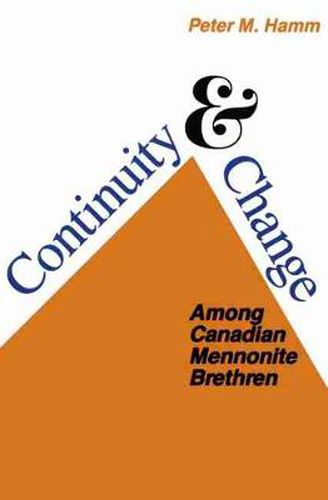Readings Newsletter
Become a Readings Member to make your shopping experience even easier.
Sign in or sign up for free!
You’re not far away from qualifying for FREE standard shipping within Australia
You’ve qualified for FREE standard shipping within Australia
The cart is loading…






More than 450 years after their birth in the Anabaptist movement, 125 years after their secession from Russian Mennonitism, and 60 years after their immigration to Canada, the Mennonite Brethren exhibit specific and measurable signs of sectarian viability and religious vitality. To explain the persistence of the sect, Hamm analyses the process of sacralization within the Canadian Mennonite Brethren Church - which
safeguards identity, a system of meaning, or a definition of reality
According to the author,
this analysis of the Canadian Mennonite Brethren becomes a case study to test the utility of an identity theory of religion, which hinges on the integration/differentiation dialectic. It is, at the same time, a serious self-study in religious sociology, by which the author seeks to gain a better understanding of the processes of growth and decline, of continuity and change, and of the ongoing tension resulting from the religious movement’s confrontation with society.
$9.00 standard shipping within Australia
FREE standard shipping within Australia for orders over $100.00
Express & International shipping calculated at checkout
More than 450 years after their birth in the Anabaptist movement, 125 years after their secession from Russian Mennonitism, and 60 years after their immigration to Canada, the Mennonite Brethren exhibit specific and measurable signs of sectarian viability and religious vitality. To explain the persistence of the sect, Hamm analyses the process of sacralization within the Canadian Mennonite Brethren Church - which
safeguards identity, a system of meaning, or a definition of reality
According to the author,
this analysis of the Canadian Mennonite Brethren becomes a case study to test the utility of an identity theory of religion, which hinges on the integration/differentiation dialectic. It is, at the same time, a serious self-study in religious sociology, by which the author seeks to gain a better understanding of the processes of growth and decline, of continuity and change, and of the ongoing tension resulting from the religious movement’s confrontation with society.